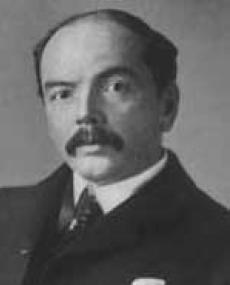
Leander Starr Jameson was the son of Robert William Jameson and Christian Pringle. After his parents moved to London, he went to school at Goldolphin in Hammersmith. Jameson went for a medical profession at the University College Hospital, London in January 1870, where he excelled, becoming a Gold Medalist. After qualifying as a doctor, he was made Resident Medical Officer at University College Hospital.
After practising in London, his health broke down from overwork in 1878 and he migrated to South Africa and settled down to practise in Kimberly. He became very popular and among those he treated were the Transvaal President, Paul Kruger and the Matabele King, Lobengula. He also got in touch with Cecil John Rhodes while in Kimberly.
After treating Lobengula for gout, Jameson was honoured with the exceptional status of Induna after undergoing the necessary initiation ceremony. For some time, Jameson was an Induna of the Matabele King’s favorite regiment, the Imbeza.
Using his relationship with Lobengula, in 1888 Jameson influenced the granting of concessions to Rhodes’s agents, which led to the formation of the British South Africa Company (BSAC).
Jameson abandoned his medical profession when the BSAC occupied Mashonaland and joined the Pioneer Expedition of 1890. Together with FC Selous and AR Colquhoun, he went east to Manicaland and was involved in securing the greater part of the country, to which Portugal was laying claim, for the Chartered Company. Jameson suggested the name ‘Charterland’ for the colonised territory, which became known as Southern Rhodesia.
From 18 September 1891 to 7 October 1893, Jameson was the Chief Magistrate of the BSAC after replacing Colquhoun, and he was central in the 1893 First Matabele War. He was involved in events that led to the massacre of the Shangani Patrol which was pursuing King Lobengula. His successor was AHF Duncan. He became the 2nd Administrator of Rhodesia (Zimbabwe) and was in office from 10 September 1894 to 2 April 1896, after replacing Colquhoun, and was succeeded by Earl Grey.
In November 1895, a piece of territory of strategic importance, the Pitsani Strip, part of the Bechuanaland Protectorate and bordering the Transvaal, was ceded to the BSAC by the Colonial Office, arguably to protect the railway running through the territory. Cecil John Rhodes, who was the Prime Minister of the Cape Colony and in control of the BSAC, aimed to bring South Africa under British dominion and encouraged disenfranchised foreign investors in the Transvaal (the Uitlanders) to resist Afrikaner domination and agitate for citizenship. Rhodes hoped that the intervention of the Company’s private army would spark an Uitlander uprising, leading to the overthrow of the Transvaal government.
While he was the Administrator of Southern Rhodesia, Jameson was commissioned by Rhodes to lead a small mounted force into the Transvaal to support an expected Uitlander uprising in Johannesburg. He assembled a private army on the Pitsani Strip which was now under the control of the BSAC, ready to overthrow the Transvaal government once the Uitlanders revolt started. But no revolt took place and, growing impatient, Jameson launched the infamous Jameson Raid in December 1895. The group managed to push up to Doornkop, about 20km from Johannesburg before superior Boer forces forced him and his men to surrender on 2 January 1896. The prisoners were sent to London for trial. Jameson was tried for leading the raid, and he took responsibility, refusing to implicate others – including Rhodes. He was convicted and sentenced for 15 months but served only four months. The failed raid also forced Rhodes to resign from his positions.
There are suggestions that Jameson’s focus on the Transvaal left a vacuum in Rhodesia which provided an opportunity for the Ndebele to wage the Second Matebele War. This is very probable since most of the men that Jameson used for the raid were Rhodesian forces.
Jameson returned to South Africa in 1900, and after the death of Cecil Rhodes in 1902 he took over leadership of the Progressive Party. He was elected Prime Minister in 1904, becoming the 10th Prime Minister of the Cape Colony. He was in office from 22 February 1904 to 2 February 1908 after replacing Gordon Sprigg. He was succeeded by John Xavier Merriman. He led the Unionist Party after the establishment of the Union of South Africa in 1910. Jameson retired from politics in 1914.
He died on 26 November 1917 at Great Cumberland Place, Hyde Park, London. His body was laid in a vault at Kensal Green Cemetery on 29 November 1917 and remained there until the end of the First World War. The body was then carried to Rhodesia (Zimbabwe) on 22 May 1920 and was buried at Matopos Hills, Rhodesia (Zimbabwe).